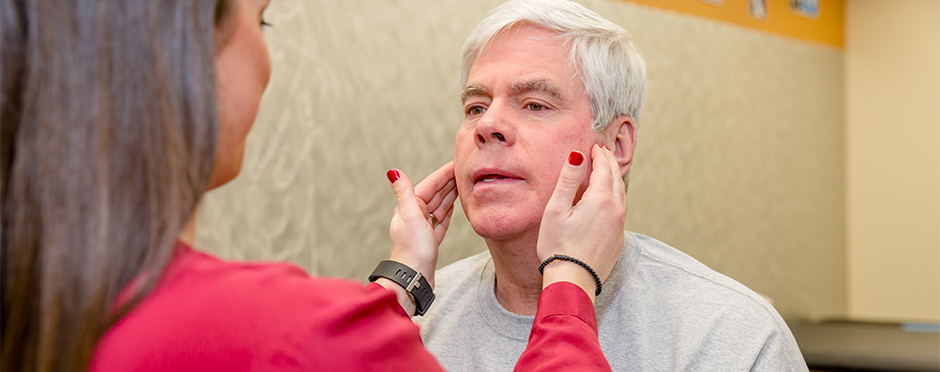
Jaw Pain? What You Need to Know about TMD
Leave a CommentThe temporomandibular joint is the joint where your jaw attaches to the temple of the skull. It is a hinge joint that allows you to move your jaw up and down, and side to side. This joint is essential for guiding mandibular motion such as chewing, swallowing and speaking.
Temporomandibular joint disorders (TMD) are conditions associated with dysfunction of the intra-articular disc of the joint as well as the associated muscles. Symptoms can include painful joint sounds, restricted movement and pain. TMD can affect up to 25 percent of the population, however few seek treatment.1 Most patients presenting with symptoms are female and between 20 and 50 years of age.1
The cause of TMD is still widely unknown. However, the majority of patients with TMD suffer from malpositioning of the TMJ disc. There is still much not understood about this condition but there seems to be a link to osteoarthritis. 1 TMD can present differently in every individual, therefore a clinical examination is necessary. There are many non-invasive options for those suffering from TMD including physical therapy and splints to reduce pain, increase range of motion and prevent further degenerative change in tissues.
Although the causes of TMD are unknown, the condition may be linked to:2
- Injury to jaw or muscles of the head/neck (ex: blow to head or whiplash)
- Grinding or clenching of teeth putting pressure on the joint
- Movement of the disc in the socket of the joint
- Arthritis of the joint
- Stress may cause tightening of facial and jaw muscles or teeth clenching
TMD Symptoms: 2
- Pain in face, jaw, neck or near the ear
- Clicking or popping with jaw opening (may or may not be painful)
- Jaw locking or jaw getting stuck in open or closed mouth position
- Decreased mouth opening
- Jaw deviation with mouth opening
- Tired feeling in your face
- Swelling on the side of the face
Physical Therapy for TMD
Physical therapy may use manual and exercise techniques to relieve pain in the joint and muscles, and to improve range of motion of the temporomandibular joint. Examples of techniques include changing posture, diet and stress- related habits. Additionally, modalities including TENS or ultrasound can be used to reduce inflammation, increase local blood flow and promote muscle relaxation. There have been studies that show a significant increase in range of motion with muscle awareness relaxation training.1 The goal of exercise therapy is to strengthen and improve mobility in the muscles of mastication and the cervical spine. Therapy exercises try to “re-teach” the muscles especially as it relates to posture and alignment of the craniomandibular system. Physical therapy treatment can differ between patients due to the differing symptoms associated with TMD.
Splints for TMD
Occlusal splints can help establish balance between the bite position and the TMJ. A dentist can help with a splint. The role of the splint is to help with myofascial pain, muscle strain and fatigue. That being said, there are mixed reviews regarding splint use.1
If you are concerned with joint pain or symptoms of TMD, click the link below to schedule an appointment at your nearest Athletico location.
The Athletico blog is an educational resource written by Athletico employees. Athletico bloggers are licensed professionals who abide by the code of ethics outlined by their respective professional associations. The content published in blog posts represents the opinion of the individual author based on their expertise and experience. The content provided in this blog is for informational purposes only, does not constitute medical advice and should not be relied on for making personal health decisions.
References:
1. Murphy MK. Int J Oral Maxillofac Imp (2013) Temporomandibular disorders a review of etiology clinical management and tissue engineering strategies.pdf
2. Shaffer SM, Brismée JM, Sizer PS, Courtney CA. Temporomandibular disorders. Part 1: anatomy and examination/diagnosis. J Man Manip Ther. 2014;22(1):2-12.
3. Shaffer SM, Brismée JM, Sizer PS, Courtney CA. Temporomandibular disorders. Part 2: conservative management.
